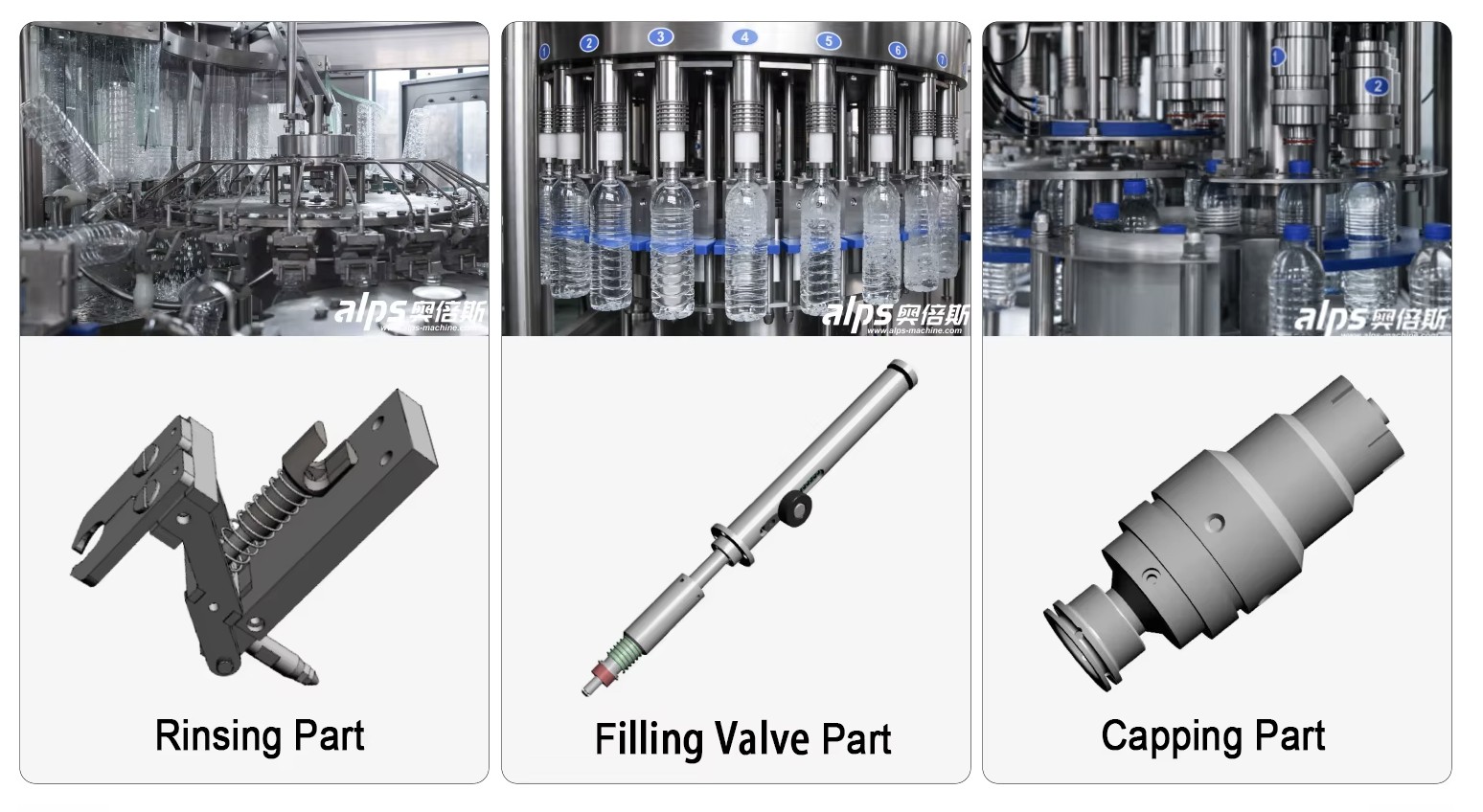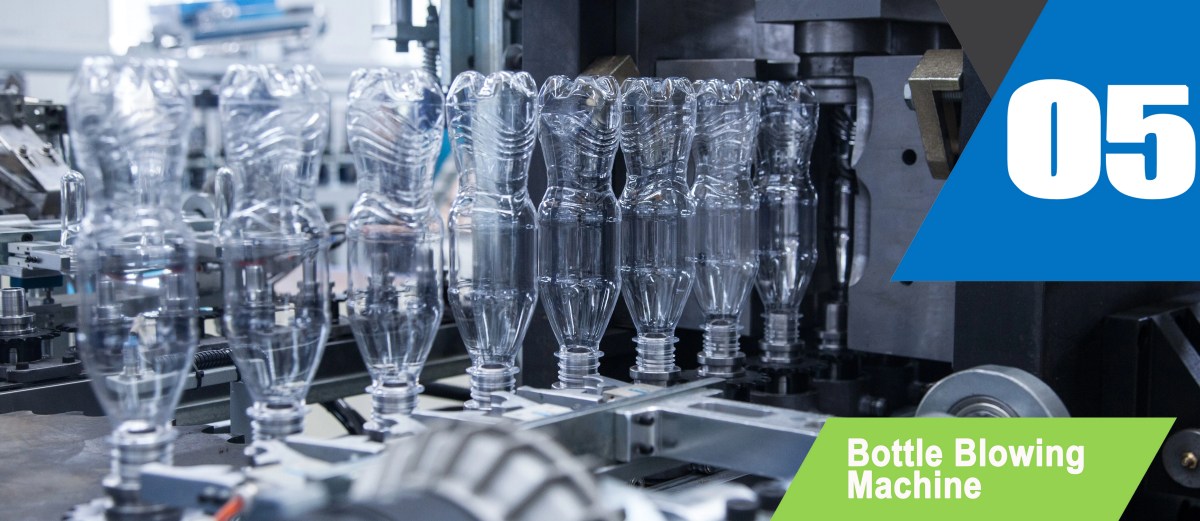Advanced Liquid Package Solution
Combiblock systems have revolutionized the beverage manufacturing industry by integrating bottle blowing, filling, and capping into a single, compact unit. Particularly in the mineral water sector, where hygiene, efficiency, and speed are critical, combiblock lines offer significant advantages. However, like all complex machinery, they are not immune to technical issues.
Understanding the common technical problems that arise in combiblock lines—and knowing how to resolve them—is essential for maintaining production uptime, ensuring consistent product quality, and extending the equipment’s lifespan. This article outlines the most frequent technical challenges and provides practical, actionable solutions.

A combiblock system is an advanced bottling solution that combines three major processes:
Blow Molding: The transformation of PET preforms into bottles using heat and air pressure.
Filling: The precise dispensing of liquid—typically mineral water—into bottles.
Capping: The secure sealing of bottles with caps using controlled torque.
These functions are synchronized through a centralized control system, often featuring PLC (Programmable Logic Controller) and HMI (Human Machine Interface) components. The integrated design reduces space requirements, minimizes contamination risks, and boosts throughput. However, this integration also means that a malfunction in one section can affect the entire line.
Symptoms:
Bottles with uneven walls.
Deformed shapes.
Variation in bottle weight and size.
Causes:
Incorrect preform heating.
Malfunctioning blow molds.
Inconsistent air pressure or supply.
Use of substandard preforms.
Solutions:
Calibrate Heating Zones: Ensure preforms are evenly heated by regularly calibrating infrared heating lamps.
Inspect Blow Molds: Clean and inspect molds to avoid residue buildup that leads to uneven shapes.
Check Air Systems: Maintain air filters and ensure compressors are operating within specification.
Use Quality Preforms: Choose preforms from certified suppliers and monitor incoming quality.

Symptoms:
Bottles underfilled or overfilled.
Spillage or product loss during filling.
Causes:
Worn or misaligned filling valves.
Faulty flowmeters or level sensors.
Inconsistent liquid pressure.
Solutions:
Regular Calibration: Implement scheduled calibration of flowmeters and level sensors.
Inspect Valve Seals: Replace seals and gaskets as part of routine maintenance.
Monitor Liquid Feed Pressure: Install pressure sensors and check for pump inconsistencies.
Symptoms:
Caps not seated properly.
Bottles leaking during storage or transport.
Cross-threaded or cracked caps.
Causes:
Misaligned capping heads.
Worn grippers or torque chucks.
Incorrect cap feeding or orientation.
Solutions:
Realign Capping Units: Use alignment tools to ensure heads apply caps centrally.
Replace Torque Components: Swap out worn capping chucks and recalibrate torque settings.
Check Cap Feeders: Ensure caps are delivered in the correct orientation using vision systems or cap elevators.
Symptoms:
Repeated line stoppages.
Bottles stuck between transfer points.
Causes:
Faulty sensors.
Software glitches or outdated PLC programs.
Mechanical obstructions or worn-out belts.
Solutions:
Sensor Maintenance: Clean and test photoelectric and proximity sensors regularly.
Update Software: Keep PLC and HMI firmware up to date and back up configurations.
Inspect Mechanical Components: Replace worn conveyors, belts, and guides to ensure smooth transfers.
Symptoms:
Failing hygiene audits.
Higher microbial counts in bottled products.
Causes:
Clogged sterilization nozzles.
Low sterilant dosage or worn UV lamps.
Poorly maintained CIP (Clean-in-Place) systems.
Solutions:
Clean Nozzles and Filters: Schedule regular cleaning to prevent biofilm formation.
Monitor Sterilant Usage: Use flowmeters to ensure proper dosing of ozone, peroxide, or UV exposure.
Maintain CIP System: Automate and verify the cleaning cycle using sensor feedback.
To avoid unplanned downtime, implement a proactive approach using the following tools and practices:
Real-Time Monitoring: Use SCADA systems or IoT-based dashboards to monitor parameters like pressure, temperature, and flow.
Predictive Maintenance: Utilize vibration and thermal sensors to detect early signs of motor or bearing failure.
Daily Checklists: Encourage operators to perform visual inspections and log data at the start and end of each shift.
Automated Alerts: Configure PLCs to generate warnings before critical thresholds are exceeded.
Even the most advanced system can falter without trained personnel:
Ongoing Training: Offer hands-on sessions for new operators and refresher courses for experienced staff.
Standard Operating Procedures: Develop SOPs for troubleshooting common issues.
Remote Diagnostics: Partner with equipment suppliers who offer remote support and software updates.
Spare Parts Inventory: Maintain a list of fast-moving spares and ensure quick access to critical components.
Combiblock systems are a cornerstone of modern bottled water production, offering seamless integration and enhanced productivity. However, they require diligent operation and maintenance to perform at their best. By understanding the most common technical issues and implementing targeted solutions, manufacturers can minimize downtime, maintain product quality, and achieve better ROI.
A well-maintained combiblock line, supported by skilled operators and proactive monitoring, ensures your production plant runs efficiently today—and is ready for the challenges of tomorrow.

By continuing to use the site you agree to our privacy policy Terms and Conditions.